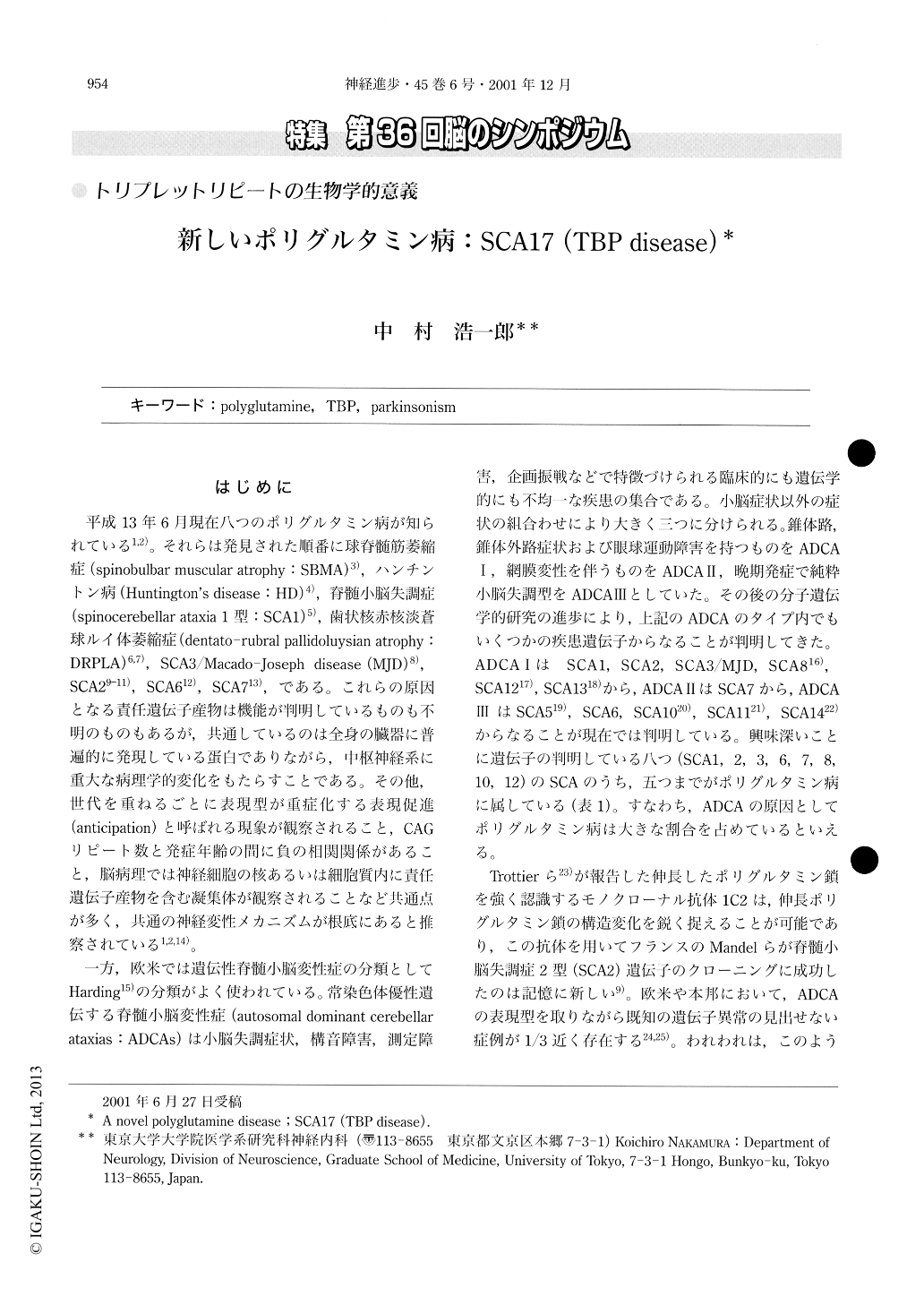Japanese
English
- 有料閲覧
- Abstract 文献概要
- 1ページ目 Look Inside
はじめに
平成13年6月現在八つのポリグルタミン病が知られている1,2)。それらは発見された順番に球脊髄筋萎縮症(spinobulbar muscular atrophy:SBMA)3),ハンチントン病(Huntington's disease:HD)4),脊髄小脳失調症(spinocerebellar ataxia 1型:SCA1)5),歯状核赤核淡蒼球ルイ体萎縮症(dentatorubral pallidoluysian atrophy:DRPLA)6,7),SCA3/Macado-Joseph disease(MJD)8)SCA29-11),SCA612),SCA713),である。これらの原因となる責任遺伝子産物は機能が判明しているものも不明のものもあるが,共通しているのは全身の臓器に普遍的に発現している蛋白でありながら,中枢神経系に重大な病理学的変化をもたらすことである。その他,世代を重ねるごとに表現型が重症化する表現促進(anticipation)と呼ぼれる現象が観察されること,CAGリピート数と発症年齢の間に負の相関関係があること,脳病理では神経細胞の核あるいは細胞質内に責任遺伝子産物を含む凝集体が観察されることなど共通点が多く,共通の神経変性メカニズムが根底にあると推察されている1,2,14)。
Genetic etiologies of at least 20% of autosomal dominant spinocerebellar ataxias (SCAs) have yet to be clarified. We have recently identified a novel SCA form in nine patients from four Japanese pedigrees through the screening for expanded polyglutamine tracts by Western blotting analysis with a monoclonal 1C2 antibody that recognizes specifically pathological polyglutamine tracts. This disease is caused by an abnormal CAG/CAA expansion in the TATA-binding protein gene (TBP), a general transcription initiation factor. Consequently, it has been added to the group of polyglutamine diseases.

Copyright © 2001, Igaku-Shoin Ltd. All rights reserved.


